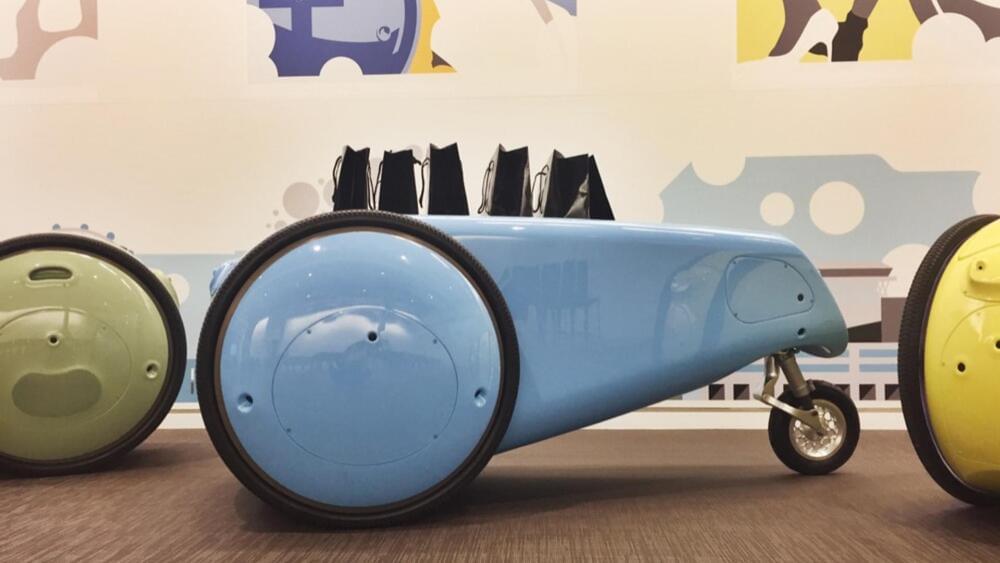Piaggio, the maker of Vespa, unveils new AI robot, Kilo with innovative fast-following tech. This could be huge going into the future.





The covert stereotypes also strengthened as the size of the models increased, researchers found. That finding offers a potential warning to chatbot makers like OpenAI, Meta, and Google as they race to release larger and larger models. Models generally get more powerful and expressive as the amount of their training data and the number of their parameters increase, but if this worsens covert racial bias, companies will need to develop better tools to fight it. It’s not yet clear whether adding more AAE to training data or making feedback efforts more robust will be enough.
“This is revealing the extent to which companies are playing whack-a-mole—just trying to hit the next bias that the most recent reporter or paper covered,” says Pratyusha Ria Kalluri, a PhD candidate at Stanford and a coauthor on the study. “Covert biases really challenge that as a reasonable approach.”
The paper’s authors use particularly extreme examples to illustrate the potential implications of racial bias, like asking AI to decide whether a defendant should be sentenced to death. But, Ghosh notes, the questionable use of AI models to help make critical decisions is not science fiction. It happens today.

Investors know that most startups fail, but something that may be less understood is how few mobile apps actually make money. According to a new analysis of the subscription app economy from mobile subscription toolkit provider RevenueCat, the top 5% of apps generate 200 times the revenue of the bottom quartile after their first year, while the median monthly revenue an app generates after 12 months is less than $50 USD.
The “State of Subscription Apps” report offers a bird’s-eye view into the subscription app universe, as RevenueCat has nearly 30,000 apps using its platform’s tools to manage their monetization. Outside of Apple and Google, that makes RevenueCat the largest collection of subscription app developers on one platform.
This report specifically looks at data from over 29,000 apps and over 18,000 developers who collectively generate over $6.7 billion in tracked revenue and have over 290 million subscribers.

Google announced a number of new features for Google Play listings for games, including AI-powered FAQs, displaying the latest YouTube videos, new immersive ad formats and support for native PC game publishing. The announcements were made at the Google for Games Developer Summit held in San Francisco.
As part of the announcement, the company is releasing new tools related to Play Store listings to attract more users. Developers can display promotions and the latest YouTube videos directly in their listings — they will be shown to users in the Games tab of the Play Store.
Google is also introducing support for AI-powered FAQs on the game’s information page in English. Currently, these features are rolling out to a limited set of developers. The company had been testing AI-generated FAQ answers on Play Store for non-game-related apps for some time.

Deepgram has made a name for itself as one of the go-to startups for voice recognition. Today, the well-funded company announced the launch of Aura, its new real-time text-to-speech API. Aura combines highly realistic voice models with a low-latency API to allow developers to build real-time, conversational AI agents. Backed by large language models (LLMs), these agents can then stand in for customer service agents in call centers and other customer-facing situations.
As Deepgram co-founder and CEO Scott Stephenson told me, it’s long been possible to get access to great voice models, but those were expensive and took a long time to compute. Meanwhile, low latency models tend to sound robotic. Deepgram’s Aura combines human-like voice models that render extremely fast (typically in well under half a second) and, as Stephenson noted repeatedly, does so at a low price.

Polar Signals was founded in 2020 by Branczyk, an ex-Red Hat engineer and leading figure in the Prometheus and Kubernetes ecosystems — experience that positions Polar Signals well to target the enterprise cloud segment.
Since its formal commercial launch back in October, the company has amassed more than a dozen paying customers, including Vercel, Materialize, Canonical and Weaviate — and this is something that its fresh cash injection will help it double down on, as it seeks further scale in the coming months and years.
“Our pipeline is so large we can’t even close them [new customers] quickly enough, which is also why we’re planning on growing the team in this direction significantly,” Branczyk said.

The advisory followed a mini-scandal over Gemini and the Indian government last month. The AI tool, responding to a query about whether Indian Prime Minister Narendra Modi was a fascist, responded that Modi had been accused of implementing policies that some had characterized as fascist. India’s deputy IT minister Rajeev Chandrasekhar called it “direct violations” of the IT Rules, 2021.
Last month, Google also suspended Gemini’s ability to generate people’s images after it showed historical inaccuracies. The company then said it would soon re-release an improved version to address the issues.
It is unclear whether Google will unblock Gemini for answering election-related queries after the elections end later this year. We have contacted Google about this and will update this story when the company responds. We are also awaiting a full list of countries where the update is live now, and we will update the post as we learn more.
